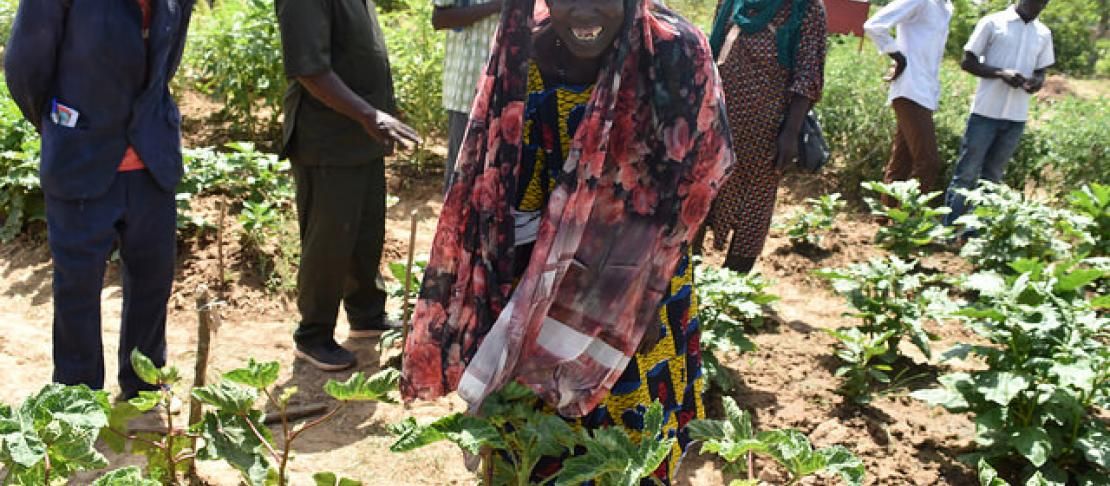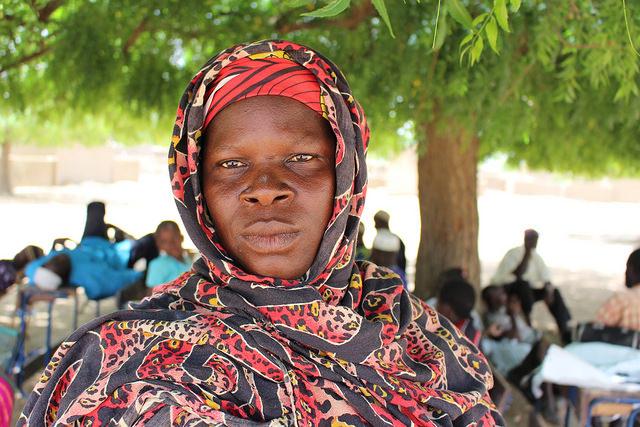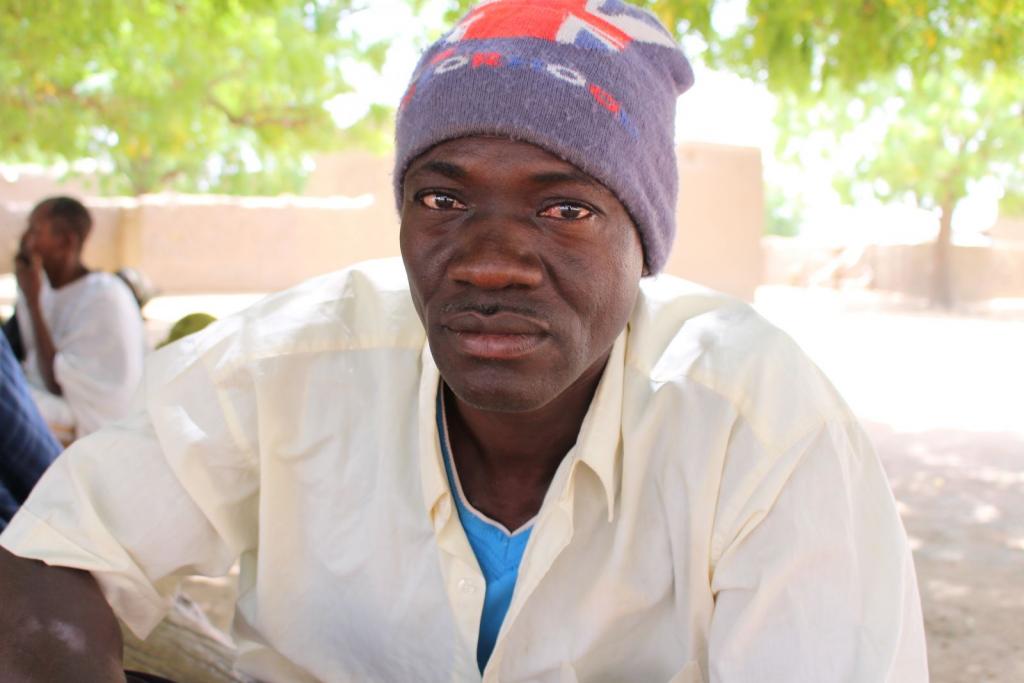From ten to thirty bags of millet: How the Climate-Smart Village is improving farmers’ lives in Cinzana

Farmers who participated in demonstration trials at the Cinzana Climate-Smart Village shared testimonies about their experiences and field results.
On the road to Ngakoro and Tongo Climate-Smart Villages (CSVs) in Cinzana, one could see newly cleared land, constructed tie ridges and piles of compost in preparation for the farming season.
The area is semi-arid with sparse vegetation, and is very vulnerable to climate change. Water is drawn from a depth of 30 meters in available communal wells while fodder of fair nutritive quality is scarce for livestock nutrition.
Children carry large piles of dry grass for cattle feeding on their heads, while their parents sit under a big tree, visibly happy and enthusiastic to have a discussion with the CCAFS team.
As the first rains begin and farmers start preparing their fields for the cropping season, the moment is ripe to reflect and appraise farmers’ impressions of climate-smart agriculture (CSA) technologies introduced to them in 2017. In 2017, a number of CSA technologies and practices including tie ridges, micro-dosing, improved seeds, and compost, among others, were tested in collaboration with farmers and the Agriculture Research Institute of Mali (IER) for agronomic performance.
Testimonies on CSA practices
Farmers who took part in the 2017 demonstration trials provided feedback on how the technologies and practices benefited them. During the discussions with CCAFS and IER, participants confirmed that the demonstrated CSA practices helped improve their climate resilience through increased productivity.
The most important lesson I learned is microdosing. Before the CSV activities started, I used to disperse a very large amount of fertilizer over my entire field. Now, with this new climate-smart practice learnt, I use 4 times less fertilizer for the same size field. Last year, I harvested 24 bags of millet while my prior harvests were a maximum of 10 bags. Microdosing was so effective that everyone in the village decided to adopt it for the years to come."
Lamine Konaté, farmer
Lamine Konaté is a farmer in the Cinzana CSV. Photo: Dansira Dembélé (CCAFS West Africa)
Other members shared their experiences and eagerness to continue practicing CSA options like contour ridges, tied ridges, crops associations and use of climate-adapted seeds:
I am looking forward to implementing all that I learnt last year in the coming season. Last year, I dedicated only a small portion (about a quarter of an acre) of my land to the CSA options CCAFS introduced. This year, I am ready to try at least three options on one hectare for best crop yield”
Boua Dembélé, farmer and participant in the 2017 demonstration trials
Farmers also testified that with CSA, they could farm relatively smaller acreages of land for the same or better yield and profits they would have obtained on large farms. Boua Dembélé noted, to resounding cheers and clapping by colleague farmers, "using efficient CSA practices on small farms resulted in better crop yields compared to our very large fields. I am sure many of us have now understood that we can save our energy while gaining more from our small fields thanks to the CSA practices we tried last year.”
Hawa Diarra is one of the women who benefited from the first market gardening training given as part of the CSV approach last year in Cinzana.
It was truly a new experience for us. The way we work has changed considerably. In the past, we did not benefit from the gardening because of our limited CSA knowledge. For the first time, we have tested and approved vegetable production using tie ridges. Thanks to the use of adapted seeds and the proper application of organic fertilizer, the yield of vegetables we obtained has exceeded our expectations.”
Hawa Diarra, farmer

Hawa Diarra participated in the demonstration trials in market gardening in 2017. Photo: Dansira Dembélé (CCAFS West Africa)
The experience has been so beneficial to women that they have managed to sell a large part of their crop and save money in a joint bank account. This money is lent to any member of the women's group at a 20% per annum interest rate. The women also related improved productivity of vegetables to their household nutritional requirements and health.
The most important thing to note is the contribution to the health of women and children through nutrients obtained from the vegetables harvested for household consumption
Farmers also shared experience on “thinning out," a new cultural practice to them.
Makan Tounkara, 40, a millet farmer, explained his first experience with the practice of thinning: "A few years ago, I hardly could imagine that thinning was an important agricultural practice. I have to admit that it was difficult for me to eliminate the supernumerary growing millet plants, believing that it would cause me a loss in yield. Thanks to the success of the demonstration tests, I understood that it is an essential practice to allow the plants to have enough space to grow."
Read more:
- Project page: Climate-Smart Villages
- Blog: Better decision support for improved livelihoods among farmers in northern Ghana
- Blog: Guided tours to Cinzana Climate-Smart Villages prepare farmers for a better agricultural future
- Brochure: West Africa Climate-Smart Villages AR4D sites: 2016 Inventory
Dansira Dembélé is the Communication Officer at CCAFS West Africa. Mariam Magassa is a Masters student at ISTOM Ecole Supérieure D'agro-développement International, an intern at CCAFS West Africa




